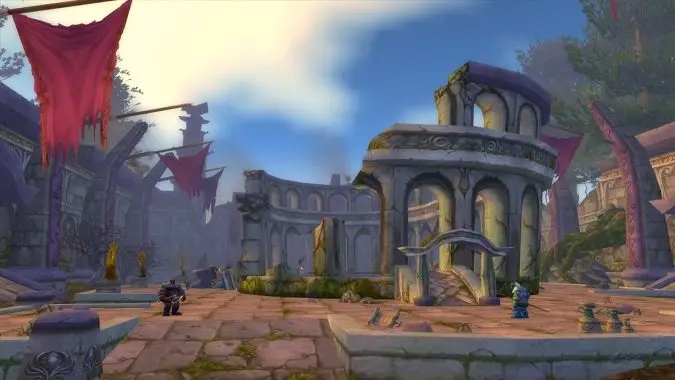WoW Archivist: Life in Classic’s patch 1.12
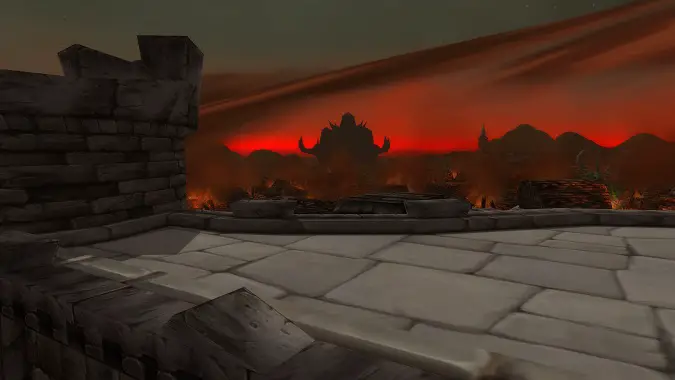
In a recent Dev Watercooler feature, Blizzard announced that World of Warcraft Classic realms will run with a specific patch. Most players consider patch 1.12 to be the definitive state of Classic, so Blizzard’s choice makes a lot of sense. In the announcement, they called the patch “the most complete version of the classic experience.” It’s hard to argue that. Patch 1.12 was the final major patch of Classic.
To understand what playing on Classic realms will be like, let’s look at how players were spending their time back then, in the summer of 2006.
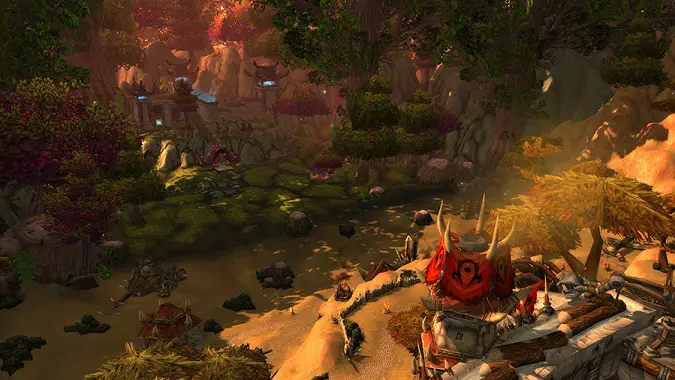
Battlegrounds linked
When Battlegrounds first launched, they were tied to your realm. Everyone on your team was from your realm and your faction, and everyone on the opposite team was from your realm and the opposite faction. Blizzard’s philosophy back then was that they wanted rivalries to develop between the factions on each realm. They wanted you to see groups of the same players whenever you were engaged in PVP. They wanted you to have that nemesis who always beat you and motivated you to improve your skills.
Needless to say, this created some unbearably long queues. Alliance-heavy PVE realms had very long queues for Alliance and instant queues for Horde. PVP realms had the opposite problem: Horde players had to wait forever to get into a Warsong Gulch match.
Patch 1.12 changed all that. It created “linked” Battlegrounds that allowed cross-realm matchmaking for the first time. Queues were much faster if you had a slow queue and a little slower if you had an instant queue, but overall it was a much-needed change. Linked Battlegrounds were actually the major feature of Patch 1.12, which Blizzard entitled “Drums of War.”
The Honor system in 1.12 was still the original quantity-over-quality grind, so players who wanted to reach high ranks were queuing for Battlegrounds nonstop during this era. BGs were far more effective, if less spontaneous and chaotically fun, than the Tarren Mill/Southshore wars.
It’s notable that Alterac Valley was actually the worst Battleground to grind for honor. If you killed the same player over and over again, those Honorable Kills yielded diminishing returns, all the way down to zero honor. The sometimes days-long matches of Alterac pitted you against the same team for hours at a time in many cases, so eventually you’d just stop getting any honor at all.

Naxxramas, bane of guilds
During 1.12, progression raiders were still hard at work on patch 1.11’s major feature and the final raid zone of Classic WoW: Naxxramas. Even though the raid had launched several months prior to Drums of War, guilds still hadn’t cleared the zone yet. It would take Nihilum about another two weeks after 1.12, into September 2006, to finally defeat Kel’thuzad.
Naxxramas presented the biggest challenge yet for raiding guilds. In absolute terms, I wouldn’t call it the most difficult raid in WoW history, because the mechanics of Mythic raiding are far more complex now than they were back then. But in terms of sheer logistics, Naxxramas was a raid that broke guilds in half. Its composition demands, resistance gear requirements (from four different schools of magic!), and difficulty — not to mention its 40-player requirement — made for quite a tall order. If your team members weren’t at the top of their game, willing to come prepared with a huge amount of potions, elixirs, and other consumables, you essentially had no business there.
For the players who wanted the ultimate challenge WoW had to offer, Naxxramas was their jam. Leading a small army of 40 heroes against the forces of the Scourge, armed to the teeth with gear from Ahn’Qiraj and Blackwing Lair, has seldom been recreated in WoW for sheer epicness.
First, of course, you had to attune to the zone. The Argent Dawn charged you a small fortune in gold and items for that privilege, unless you were Exalted with them. But if you could succeed there, you earned some incredible rewards, such as the unprecedented nine-piece Tier 3 sets, the Corrupted Ashbringer, and WoW’s first caster legendary Atiesh, Greatstaff of the Guardian.
Very few guilds cleared Classic’s Naxxramas. This was a big reason why Blizzard decided to bring the zone back during Wrath of the Lich King, because so few players had ever seen it.
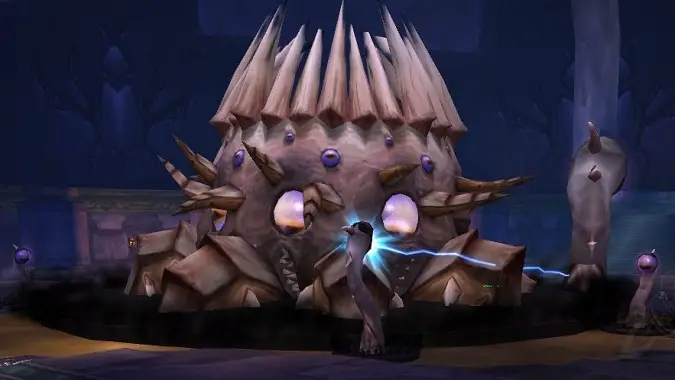
Older content was still relevant
One of the amazing things about Classic WoW (or one of its huge problems, depending on your point of view) was that just about all of the endgame content was relevant up until Burning Crusade. Even in 1.12, players were still running dungeons like Upper Blackrock Spire for gear. Guilds were still camping world bosses from early patches like Azuregos.
Ragnaros in Molten Core and Onyxia, from the game’s first two raids, dropped Tier 2. It was still relevant in Naxx before you could upgrade to Tier 3. Ahn’Qiraj and Zul’Gurub offered some competitive items, as well as important resistance gear, which also came from dungeons like Maraudon and Scholomance.
Some progression raiding guilds cleared every single raid zone in WoW during its reset. The 20-player raid zones, Zul’Gurub and Ruins of Ahn’Qiraj, reset on a three-day timer, so you could clear them twice per week. Even if your guild didn’t need anything else, some guilds ran Molten Core in the hopes of earning legendary weapons like Sulfuras and Thunderfury, Blessed Blade of the Windseeker.
Less competitive guilds ran these old raids as current content. With no “catch-up” mechanisms like Legion’s Veiled Argunite vendor, the only way to gear up was to progress through the tiers. Every guild did it at their own pace, and many were still happily working their way through Molten Core when the Classic era came to a close.
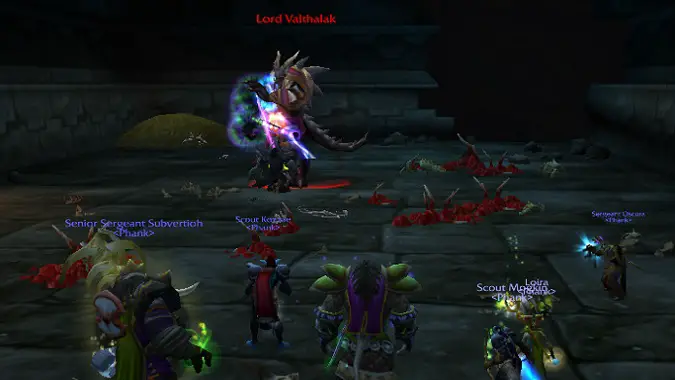
Classic’s Mythic+
One way Blizzard kept old dungeons relevant was the “Dungeon Set 2” questline. Most players referred to it as “Tier 0.5,” since it wasn’t quite as good as Tier 1 gear. This questline was, in essence, a precursor to Mythic+ dungeons. Players were asked to complete a large number of 5-player challenges to earn pieces from the set. Some of these challenges were quite brutal. They included unique summonable bosses, a PVP-style Arena fight in Blackrock Depths, and the infamous “Strat 45” or “Baron run.”
The latter was a challenge to clear the Stratholme dungeon and pull the final boss, Baron Rivendare, before a 45-minute timer expired. Yes, dungeons were so long in Classic that 45 minutes was considered a “speed run.” (Oh, and this run only required your party to clear the “undead” half of Strat, not the whole place.)
This is just a tribute
The max-level dungeon Dire Maul had its unique “tribute run.” The goal was to avoid killing all of the bosses until you reached the very last one. By vanquishing him alone, the rest of the ogre clan named you their king and offered a tribute of extra-awesome loot. To do this, you had to come prepared with specific items that allowed you to trap or fool the early bosses so you could get past them. Players continued to make tribute runs throughout Classic WoW for these hard-to-obtain items. Plus, it was just really fun!
Players also farmed Dire Maul for the rare drop Foror’s Compendium of Dragon Slaying. Warriors and Paladins could begin a quest chain to earn Quel’Serrar, considered one of the best tanking weapons of its time. If you didn’t want the sword, the book sold on the Auction House for a fortune.
The library in Dire Maul also offered special enchants called Librams. You could use these to apply bonuses to leg and head gear.
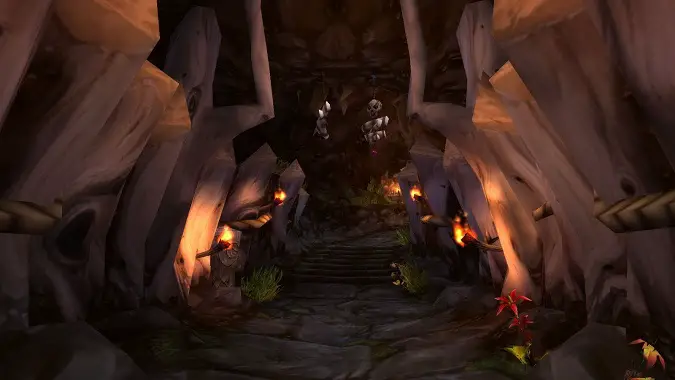
Faction action
Classic WoW had a ton of factions, especially if you include the base racial factions like Thunder Bluff and Gnomeregan. Back then, factions were generally much, much harder to earn reputation for. Nevertheless, many players spent time upping their rep for factions like Timbermaw Hold’s furbolgs, who offered the Defender of the Timbermaw trinket at Exalted.
Patch 1.11 made the Argent Dawn the centerpiece faction of late Classic. To gain reputation, players could equip an Argent Dawn Commission, which took up a trinket slot. If you killed Scourge enemies with the trinket equipped, they would drop Scourgestones. The Scourgestones could then be turned in for reputation.
Argent Dawn vendors sold trade skill recipes, special food, and resistance-enhancing shoulder enchantments. Resistance was a critical need for raiders at the time, so these were a bigger deal than you might think. You could buy a +5 enchantment for any school of magic at Revered. The much-coveted Chromatic Mantle of the Dawn, offering +5 resist to all schools of magic, was only available at Exalted.
The Cenarion Circle set up shop in Silithus along with a revamp of the zone in patch 1.9. There, you could farm Twilight’s Hammer members for parts of their costumes. Then you could summon increasingly more difficult bosses. The hardest ones dropped raid-level epics. Meanwhile, you earned Circle reputation, which unlocked quite a few different recipes, particularly nature resistance gear.
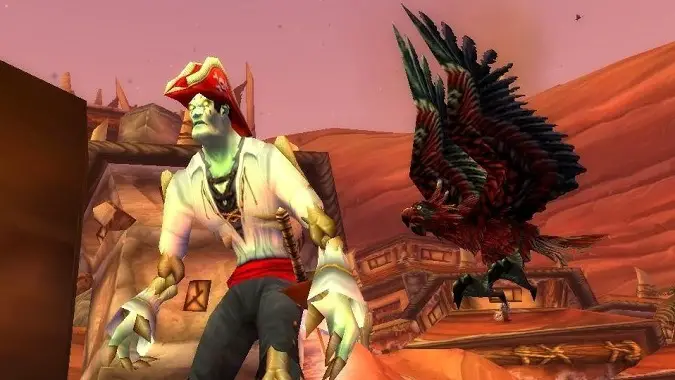
Other players made war on the goblins of Booty Bay and other goblin settlements to earn reputation with the vicious Bloodsail Buccaneers. At Friendly, you could earn the Bloodsail Admiral’s Hat, a reward added late in classic.
Factions such as the Thorium Brotherhood, Darkmoon Faire, and Wintersaber Trainers also offered rewards, as well as the PVP factions like the Frostwolf Clan/Stormpike Guard of Alterac Valley.
Classic WoW had an absolutely incredible amount of content. While we were all very eager for Burning Crusade to launch, the basic game never felt stale. There was always another reason to log in. At some point in the future, we’ll get to relive these memories — and make new ones — on World of Warcraft Classic realms.
Please consider supporting our Patreon!
Join the Discussion
Blizzard Watch is a safe space for all readers. By leaving comments on this site you agree to follow our commenting and community guidelines.
 @QuestVendor
@QuestVendor